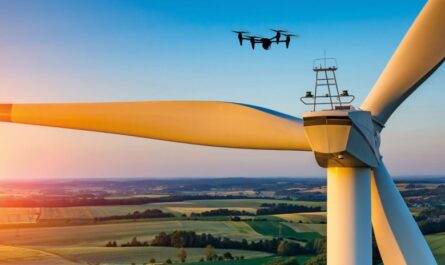Introduction to Ship Conversion
Ship conversion is the process of significantly altering a vessel from its original design or purpose to perform a new set of operations. Modern ships are highly versatile platforms that can be adapted to changing economic, technological, and environmental conditions through strategic modification projects. By investing in conversion work, shipowners are able to extract additional value from their aging assets and access new markets or operational roles.
Regulatory Compliance Upgrades
Regulatory bodies frequently impose new design standards and emission limits to improve safety and environmental protection at sea. This poses an ongoing challenge for shipowners seeking to remain in compliance as their vessels age. Conversion work allows outdated systems to be replaced with compliant alternatives, extending a ship’s useful life. Common compliance-driven conversions include installing ballast water treatment systems, replacing diesel engines and generators with cleaner Tier III models, and modifying fuel and waste handling infrastructure. Done right, such projects satisfy regulators while preempting costly retrofits or early retirement.
Commercial Role Transitions
Perhaps the most transformative conversions see ships move from one commercial sector to another. Tankers are a prime example, with older vessels routinely sold for conversion to alternative uses like floating storage and offloading units, offshore accommodation barges, and even cruise ships. Drillships and semi-submersibles also transition between oilfield jobs or branch into decommissioning work. Unlike newbuilds, converted ships leverage existing steel structures for a lower capital entry into new lines of business. Their operating profiles can be optimized through customized upgrades rather than generic off-the-shelf designs.
Military and Government Vessel Adaptations
Naval architects skilled in conversion work play an important role supporting defense and public service fleets. As military needs change over time, aging platforms may be partially or fully repurposed rather than replaced. Coast guard cutters, icebreakers, fleet support tugs, and even aircraft carriers undergo conversions to extend service lives or take on evolving missions. Modularity is key, allowing flexible arrangements of weapons, sensors, cargo holds, medical facilities and more depending on requirements. Conversion keeps older government vessels in active duty roles for decades rather than premature decommissioning.
Alternative Power and Automation Systems
With environmental pressures mounting, going “green” is a major driver of modern ship conversions. Installing hybrid diesel-electric, fuel cell, battery or liquified natural gas (LNG) propulsion systems turns conventional ships into more sustainable operations. Onboard generation is also transitioning, with gensets being retrofitted to run on cleaner fuels or replaced by megawatt-scale battery packs. Automated systems bring similar upgrades, allowing older tonnage to tap new levels of remote operation, data monitoring, and cyber protection through technology refits. Owners invest to distinguish their converted assets and tap growing demand for greener solutions.
Structural Enhancements and Modifications
While some conversions focus on systems, structural work also transforms ship capabilities. Lengthening and breadth increases allow higher cargo intake, fulfilling new port requirements or market opportunities. Tankers can gain added cargo or ballast tanks through midbody expansions. Drillships see rigs upgraded through full hull replacements. Decks, holds and cargo handling equipment undergo customized reconfiguration, from container layouts to bulk liquid handling. Even relatively small structural alterations deliver step-changes in operational scope and efficiency for converted vessels. Prefabrication minimizes drydock time for such adjustments.
Passenger Vessel Conversions
Passenger vessels present some of the most creative conversion possibilities. Obsolete ferries and cruise ships continue carrying clients through life extensions involving major interior redesigns. Staterooms, public spaces, amenities and entertainment venues are completely rebuilt with contemporary configurations. Some cruise conversions even introduce new passenger decks above existing supertanks. On the more utilitarian end, older PSVs and crew boats emerge as excursion cruise ships, floating hotels or event venues after refits. Outdated car and train ferries find second lives as informal passenger-cargo hybrids through targeted conversions.
Specialised Conversion Projects
Beyond conventional cargo and passenger roles, ambitious one-off conversion projects open up unusual new ship types. Oilfield pipe-laying barges transition to competitive offshore wind installation and maintenance vessels. Obsolete container ships emerge as floating data centers, research labs or offshore aquaculture farms. Ageing car carriers and tankers undergo specialized refits for unusual government roles like underwater surveillance platforms or space-launch support vessels. Complex conversions demand close owner-yard cooperation but create novel ship designs impossible through new construction. With creativity, even the most unusual conversion concepts can find niche applications and customers.
Conclusion
In summary,Ship conversion remains a cornerstone of the maritime industry, offering owners and operators a flexible strategy for adapting assets to changing times. Regulatory compliance, alternative fuels, structural changes, and novel operating roles all drive ongoing conversion demand, allowing ships to benefit from repeated life extensions instead of early retirement. As environmental and technology pressures mount, conversion will prove an increasingly appealing option over newbuilding for responsibly upgrading existing tonnage. With ingenuity, ship conversion promises to reshape fleets and open new avenues of maritime commerce for decades to come.
*Note:
- Source: Coherent Market Insights, Public sources, Desk research
- We have leveraged AI tools to mine information and compile it



